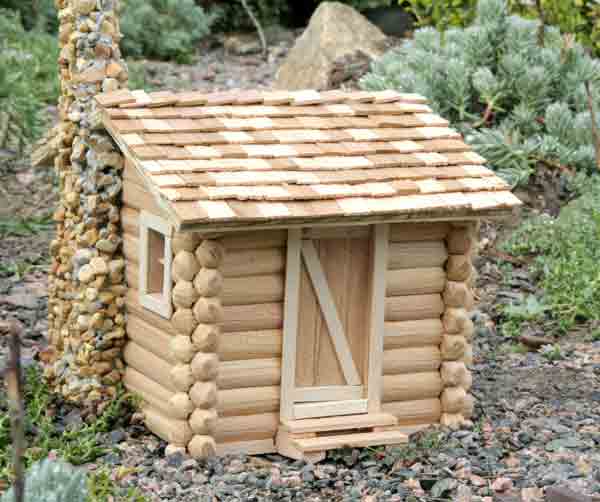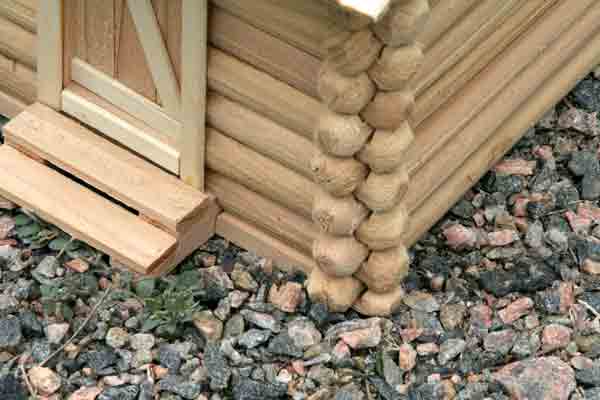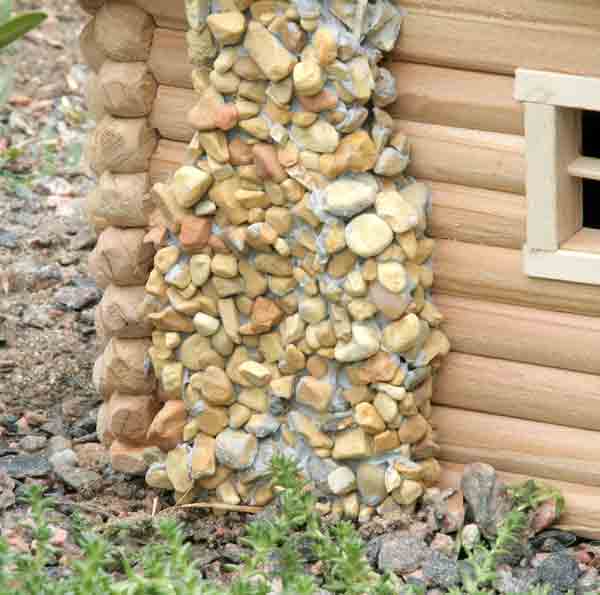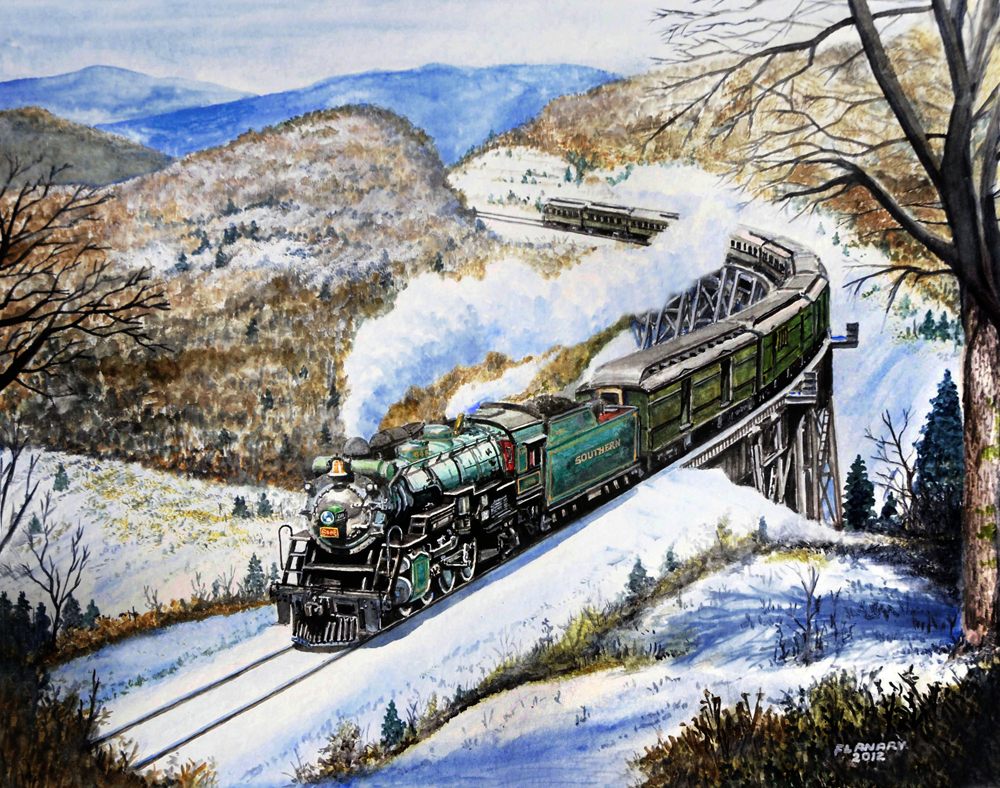1:24 scale, “Prospector” log-cabin kit
Timberline Station
PO Box 874
Hartselle AL 35640
Price: $27.95
Web site: www.timberlinestation.com
Cedar log-cabin kit, suitable for beginner to
intermediate builders. Dimensions: length, 8″; width, 7″; height, 8″. In 1:24 scale, this works out to 16′ x 14′ x 16′, respectively
Pros: Precut logs make construction relatively simple; excellent illustrated instructions
Cons: None
The kit consists of pre-notched logs, which fit together much like the Lincoln Logs many of us played with as children. It also comes with various pieces of stripwood needed to frame the doors and windows, a small bag of pea gravel for the chimney, and split-cedar shingles for the roof. Everything is neatly bundled, with plenty of extra stripwood and shingles, should you need them. (My sample only had one extra log.) The kit also includes brass pins to help hold the logs together.
Construction is simple and well illustrated in the instruction pamphlet supplied with the kit. One of the only departures I made from the instructions was that I opted not to use the brass pins. Instead, I relied on the glue (Titebond II) to hold the logs together. I’ve had one kit outside for three years, and it’s held up remarkably well. If you wish to use the pins, it’s some extra drilling and hammering steps, but not difficult. You can also use narrower pins from an air-powered pin nailer if you have one at your disposal.
I began by building the wall sections up to the gable level. The windows and doors are then built as separate assemblies. This is the only “tricky” part of the process, but even then it’s not difficult. Scale drawings are included to help you cut the stripwood to the correct size. Windows and door are then be glued into the cabin, the gables added, and the roof glued in place.
The chimney comes next. I departed from the instructions again, opting to glue the chimney core onto the building before adding the stones. In retrospect, I’m not sure this was easier, as I thought it might be. The core of the chimney is to be coated with adhesive (the instructions recommend Liquid Nails), and the stones simply pressed into the adhesive and allowed to dry. Alas, my tube of Liquid Nails was no longer liquid, so that was out. Not to be deterred (and to save a trip to the store), I opted for some gray silicone-concrete crack sealer I had, figuring the gray color would look something like mortar. Well, maybe. It worked okay-the adhesive certainly holds, but the gray is a bit “too” gray. Liquid Nails would blend better with the color of the stone.
The roof was somewhat easier to do than the chimney. It consists of a 5/16″-plywood subroof, onto which the split-cedar shakes are glued. This is a tedious process, but well worth it in the end. There’s nothing like a true cedar shake roof. There were even enough shakes left over to do a small shed, should you so desire.
What you end up with is a small cabin that will look great tucked into the bushes or beside a pond on your railroad. It has enough detail to make a good foreground model, too, and there’s room for more details should you wish to add them.
One final note: The manufacturer stresses that these kits are not children’s toys. While they’re designed on the same premise as Lincoln Logs, they have small parts, sharp bits, and other things that may pose a hazard to little hands. They recommend that, if you would like your children or grandchildren to enjoy building log cabins for the railroad, you buy them a set of Lincoln Logs and save the kits for the adults (or older children, with adult supervision).
















